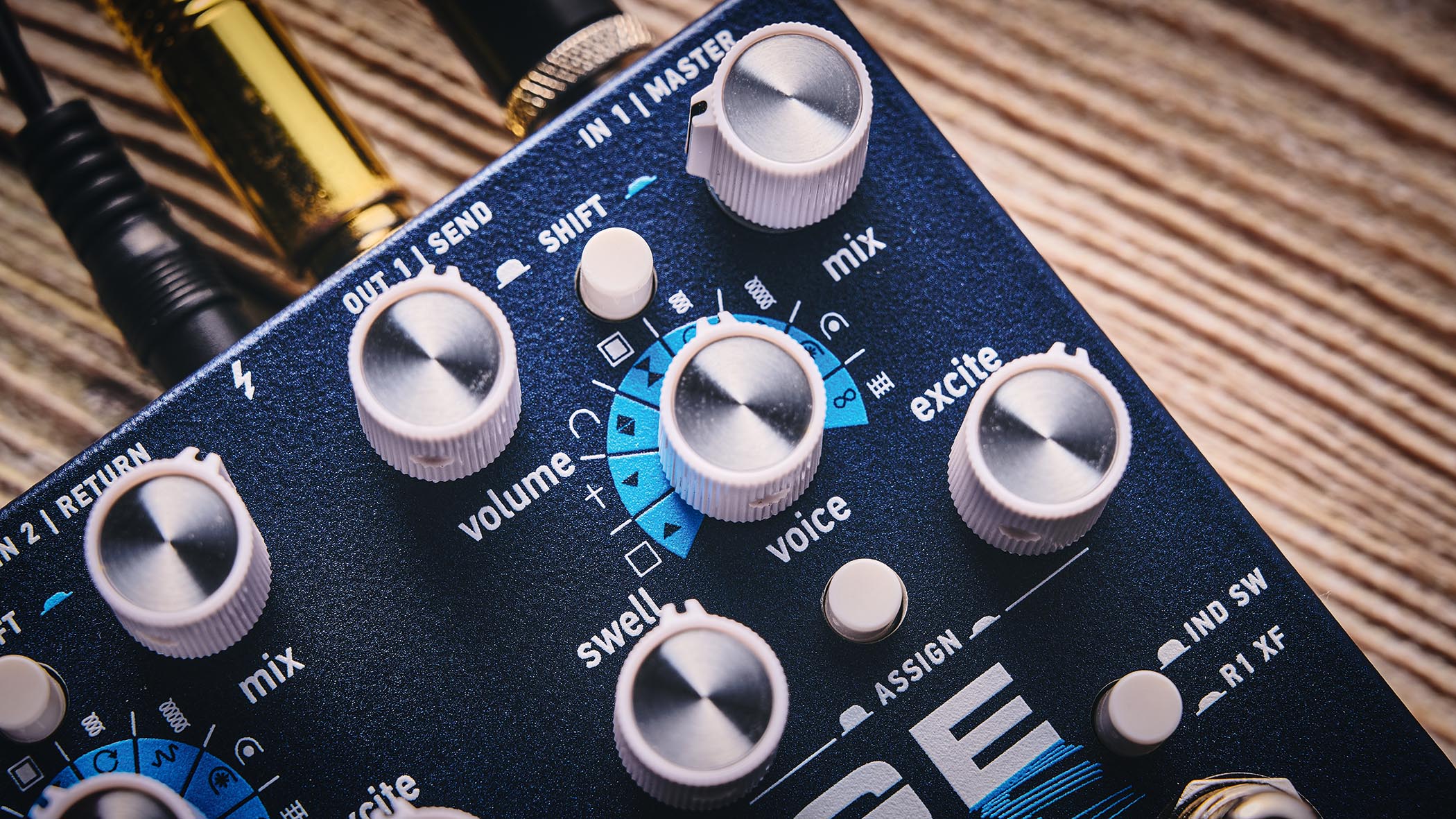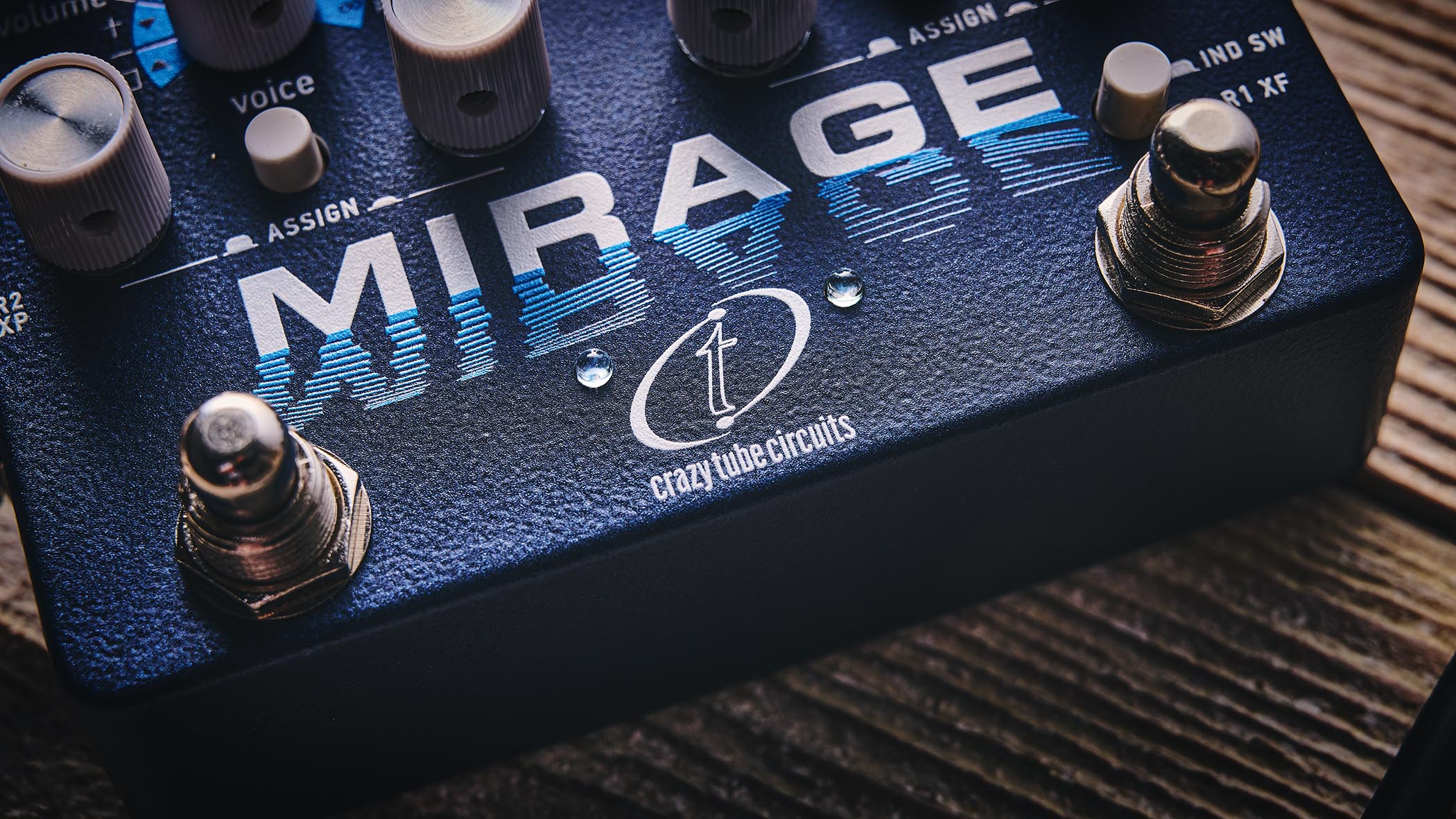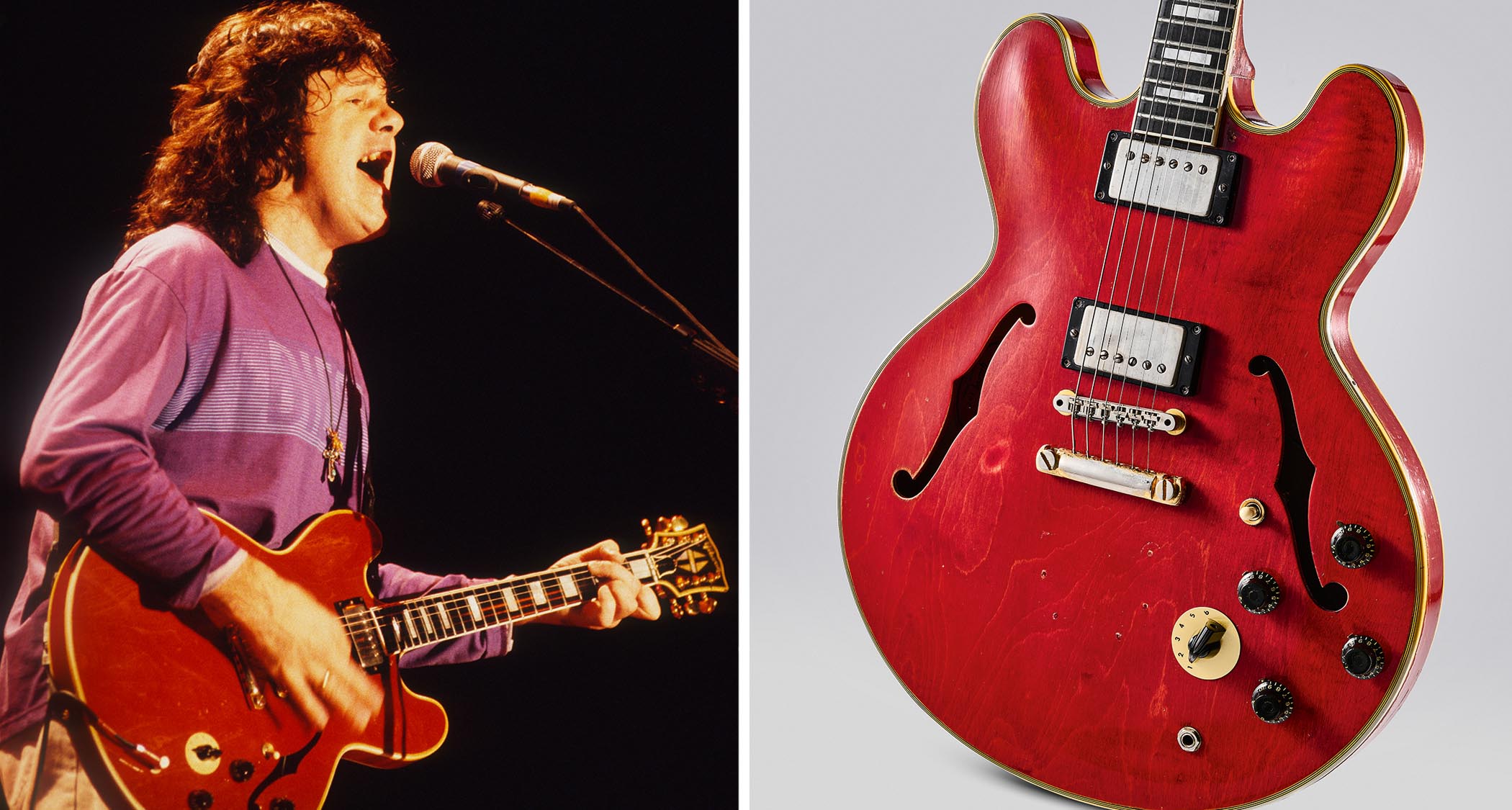Guitar World Verdict
The fact that there are so many sonic options but no memory storage might be a dealbreaker for some, but there are other pedals on the market for that. The Mirage's routing flexibility, creative sonic potential and performance options could make it a solid reality on your pedalboard.
Pros
- +
Compact footprint.
- +
Large range of reverb types.
- +
Ability to stack two reverbs.
- +
Send/return loop.
- +
Footswitchable performance options.
- +
Flexible routing.
Cons
- -
No memory storage.
- -
No reverse reverb.
- -
No pre‑delay parameter.
You can trust Guitar World
What is it?
Technically speaking, Crazy Tube Circuits’ latest pedal, Mirage, is a dual-engine ambient reverb workstation, although the company’s founder, Christos Ntaifotis, describes it in one word – “shoegaze”.
We can go for that; it can certainly create the dreamy, atmospheric quality that many would attribute to the word.
Perhaps more telling is the inscription on the pedal’s circuit board: “Music is a mirage that throws a party, nothing is real but everything grooves.” This is clearly a pedal that aims for the ethereal!
The Mirage comprises two fully independent reverb engines, R1 and R2, that can each load one of 16 distinct reverb algorithms. Those algorithms are collected in two banks of eight and displayed as symbols in two arcs around a rotary Voice switch.
The outer arc has the more traditional and familiar reverbs – Plate, Cathedral, Hall, Room, Gated, two different spring reverbs (Spring and Springier) and Inchindown, based on an oil tank – while the inner arc is host to modern ambient effects with various shimmer, modulated and infinite reverbs.
Each reverb engine has four dedicated adjustment knobs. While the Mix and Volume knobs have a fixed use, the other two are more flexible with function varying per algorithm.

Swell controls the size or length of the reverb effect in most cases, whereas Excite is a context-sensitive control so controls brightness on some of the more conventional reverbs but has pitch-shift and modulation adjustment functions for others.
All the latest guitar news, interviews, lessons, reviews, deals and more, direct to your inbox!
Swell and Excite can also be put under foot control for performance options such as ramping up the decay via a press-and-hold of the pedal’s right footswitch for R1 – but only via an external expression pedal for R2.
R1 and R2 each have their own input and outputs. This allows you to use them as two independent mono reverbs if you’re employing an external loop switcher, or in a stereo signal chain where the L and R channels are processed independently with different reverb types or the same reverb type (maybe with slight differences to widen the stereo image) in each.
R1 and R2 each have their own input and outputs. This allows you to use them as two independent mono reverbs if you’re employing an external loop switcher
The way to approach the pedal in a standard mono chain is to use the Master input and output so the signal runs in series from R1 to R2, allowing the reverbs – via the footswitches – to be used independently for different sounds at different times or stacked together for a composite sound.
This configuration enables the use of a send/return loop for placing additional pedals between the two engines for further sonic creativity.
There’s also a mono in/stereo out mode available. A set of internal switches lets you set up for a chosen way of working with either true bypass or buffered bypass with trails, and whether the Mix knob runs to a maximum standard 50/50 wet/dry mix or to 100 per cent wet (Kill Dry).
Specs

- PRICE: $365/£285/€325
- ORIGIN: Greece
- TYPE: Reverb pedal
- FEATURES: Selectable true bypass or buffered bypass with trails, two independent reverb engines, 16 reverb types
- CONTROLS: 2x each: Volume, Mix, Swell, Excite, Voice, Shift switch, Assign switch. IND/R1 XF switch, internal switches (Kill Dry R1 & R2, Bypass Mode R1 & R2, Routing Assignment), footswitches 1 & 2
- CONNECTIONS: Standard inputs 1 (master) and 2 (return), Standard outputs 1 (send) and 2 (master), XP expression pedal input
- POWER: 9V DC adaptor (not supplied) 210mA
- DIMENSIONS: 123 (w) x 97 (d) x 54mm (h)
- CONTACT: Crazy Tube Circuits
Usability and sounds

Looking at the different algorithms individually, there’s a lot of ground covered; the only thing we missed was reverse reverb. The reverbs based on conventional spaces (Room, Hall, Cathedral) all give a realistic sense of the ambience to be found in their respective locations, and each one has adjustable size/decay as well as tweakable brightness that can help tie it into the sound of your rig.
The other emulated space, Inchindown, is inspired by Scottish oil tanks that are said to have the longest man-made reverb, and it sounds really good with its decay turned right up for an atmospheric lingering reverb with a metallic edge.
Of the electro-mechanical emulations, the Plate offers reverb with a solid density that sits well with guitar, while the two spring types are also a natural fit by their very nature, one doing a very usable recreation of classic amp reverb, the other representing an outboard unit with longer springs, revisiting early ’60s surf guitar with ease.
The Swell knob mimics a Dwell control here, driving the reverb tank harder, and Excite dials in the splashiness. The Gated reverb has adjustable gate time for a short punch of reverb – useful as a substitute for a delay slapback.
There are four shimmer delays, all with adjustable decay. Three have the shimmer pitched at an octave: one an octave up for that familiar shimmer sparkle; the second an octave down for a doomier vibe; and the third offering an adjustable crossfade between up and down octaves, which effectively lets you position your shimmer on a dark-to-bright arc.

The fourth shimmer has a stable pitch-shift that you can set with the Excite knob, and using it with R1 and R2 together you can dial it in to be harmonious or discordant.
While all of the reverbs are available for individual use, it’s the stacking of two together that’s going to be the attraction here for players who like to get creative
The Repeater algorithm is described as “echoes trapped in reverb” and offers an intriguing texture via rhythmic trail of reflections. With Moduverb you get reverb tails with a sense of movement through modulation. Depth and speed are tweaked simultaneously with the Excite knob, which delivers tasty chorusing at lower levels but can take things to a more seasick extreme.
Frozen Hall offers hall reverb, but turning up the Swell knob cranks the decay to maximum for endless sustain. Finally, Infinite captures and holds a reverb loop indefinitely, responding nicely to playing dynamics if you carefully adjust the threshold.
While all of the reverbs are available for individual use, it’s the stacking of two together that’s going to be the attraction here for players who like to get creative. With the pick ’n’ mix selection of both traditional and esoteric reverbs (256 combinations with R1 and R2 used together!), there’s plenty of scope to craft some unique ambient textures.
Verdict
Verdict: ★★★★½

The fact that there are so many sonic options but no memory storage might be a dealbreaker for some, but there are other pedals on the market for that. The Mirage positively celebrates being intuitive and hands-on with no menus.
It’s nicely compact, too, although that comes with its own compromises such as no room for more than two main parameters (pre‑delay would have been useful) and hard-to-read voice selection.
The fact that there are so many sonic options but no memory storage might be a dealbreaker for some
However, those are minor points compared with the routing flexibility, creative sonic potential and performance options that could make this Mirage a solid reality on your pedalboard.
Guitar World verdict: The Mirage positively celebrates being intuitive and hands-on with no menus. Its routing flexibility, creative sonic potential and performance options could make it a solid reality on your pedalboard.
Hands-on videos
The Studio Rats
The Guitar Geek
Mike Hermans
- Best reverb pedals 2025: from spring to shimmer, these are our top picks for your pedalboard
- This article first appeared in Guitarist. Subscribe and save.
Trevor Curwen has played guitar for several decades – he's also mimed it on the UK's Top of the Pops. Much of his working life, though, has been spent behind the mixing desk, during which time he has built up a solid collection of the guitars, amps and pedals needed to cover just about any studio session. He writes pedal reviews for Guitarist and has contributed to Total Guitar, MusicRadar and Future Music among others.
You must confirm your public display name before commenting
Please logout and then login again, you will then be prompted to enter your display name.





